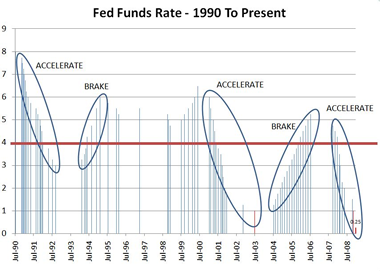Tomorrow: Not So Variable Temperatures
SEARCH BLOG: GLOBAL WARMING
On February 27, I proposed there were only two ways for general warming to occur that made sense:
- more high temperature extremes
>
- few, if any, new high temperature extremes, but milder low temperatures
>
It was apparent to me that option #1 was simply not happening... at least in the U.S. [and probably Canada, too].
So, now it appears that the strategy is to say that option #2 is, indeed, what is happening. We won't have a lot of high temperature extremes, but it will just stay warmer longer.
Via Benny Peiser [email]
So, what does this mean for the Al Gore orthodoxy? Maybe a little wiggle room as the net of scientific evidence shows that their predictions of catastrophe are politically, not scientifically, based. They can still claim warming has occurred.
Global and Planetary Change, May 2007, 57(1-2):1-15
http://tinyurl.com/yok3gm
Changes in variability and persistence of climate in Switzerland: Exploring 20th century observations and 21st century simulations
Martin Beniston a, and Stéphane Goyette a
A Chair for Climate Research, University of Geneva, Switzerland
Conclusions
This investigation, carried out for a low (Basel) and a high (Saentis) elevation site in Switzerland, has shown that contrary to what is commonly hypothesized climate variability does not necessarily increase as climate warms. Indeed, it has been shown that the variance of temperature has actually decreased in Switzerland since the 1960s and 1970s at a time when mean temperatures have risen considerably. Nevertheless, these findings are consistent with the temperature analysis carried out by Michaels et al. (1998) where their results also do not support the hypothesis that temperatures have become more variable as global temperatures have increased during the 20th century. The principal reason for this reduction in variability is related to the strong increase in the persistence of certain weather patterns at the expense of other types. A simple weather classification scheme has been designed to highlight this point, based on combinations of warm, cold, moist or dry regimes; according to this classification, winter regimes (cold and moist) associated with perturbed synoptic systems have been sharply reduced in the last decades of the 20th century, while warm and dry summer regimes have become the most persistent since the 1970s. In other words, synoptic weather patterns that are associated with high variability are today less frequent than those patterns associated with high persistence, i.e., low variability. Closer investigation of the behavior of surface pressure fields has highlighted the fact that positive pressure anomalies have increased since the 1970s, and that these are well correlated with the exceedances of temperature at both the low and high elevations.
Well, some warming has been observed since the cold side oscillation of the flat trend began in the 1960s... but so what? Is that supposed to be a bad thing?
Source
..










